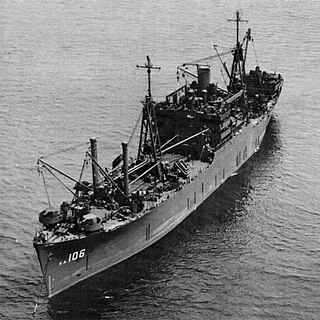
USS Union (AKA-106) was a Tolland-class attack cargo ship of the United States Navy, the fourth ship with this name, and served as a commissioned ship for 25 years and 1 month.

USS Luzerne County (LST-902) was an LST-542-class tank landing ship built for the United States Navy during World War II. Named after Luzerne County, Pennsylvania, she was the only U.S. Naval vessel to bear the name.
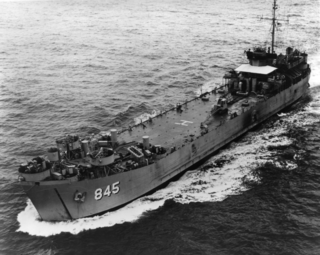
USS Jefferson County (LST-845) was an LST-542-class tank landing ship built for the United States Navy during World War II. Named after counties in 25 states, she was the only U.S. Naval vessel to bear the name.

USS San Bernardino County (LST–1110) was an LST-542-class tank landing ship built for the United States Navy during World War II. Named for San Bernardino County, California, she was the only U.S. Naval vessel to bear the name.

USNS Harris County (T-LST-822) was an LST-542-class tank landing ship built for the United States Navy during World War II. Named for counties in Georgia and Texas, she was the only U.S. Naval vessel to bear the name.

USS Jerome County (LST-848) was an LST-542-class tank landing ship built for the United States Navy during World War II. Named after Jerome County, Idaho, she was the only U.S. Naval vessel to bear the name.

USS Waxbill (MHC-50/AMCU-50/AMS-39/YMS-479/PCS-1456) was a YMS-1-class minesweeper of the YMS-446 subclass acquired by the U.S. Navy for the task of removing mines placed in the water to prevent ships from passing.

USS Sedgwick County (LST-1123) was an LST-542-class tank landing ship in the United States Navy. Unlike many of her class, which received only numbers and were disposed of after World War II, she survived long enough to be named. On 1 July 1955, all LSTs still in commission were named for US counties or parishes; LST-1123 was given the name Sedgwick County, after counties in Colorado and Kansas.

USS Outagamie County (LST-1073) was an LST-542-class tank landing ship in the United States Navy. Unlike many of her class, which received only numbers and were disposed of after World War II, she survived long enough to be named. On 1 July 1955, all LSTs still in commission were named for US counties or parishes; LST-1073 was given the name Outagamie County, after Outagamie County, Wisconsin.

USS Pitkin County (LST-1082) was an LST-542-class tank landing ship built for the United States Navy during World War II. Named after Pitkin County, Colorado, she was the only U.S. Naval Vessel to bear the name.
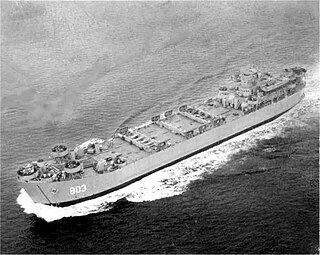
The USS Hampden County (LST-803) was an LST-542-class tank landing ship built for the United States Navy during World War II. Named after Hampden County, Massachusetts, she was the only U.S. Naval vessel to bear the name.
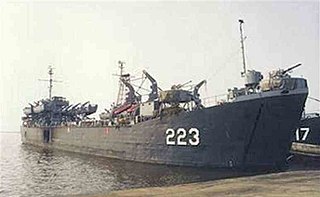
USS Iron County (LST-840) was an LST-542-class tank landing ship built for the United States Navy during World War II. Named after counties in Michigan, Missouri, Utah, and Wisconsin, she was the only U.S. Naval vessel to bear the name.
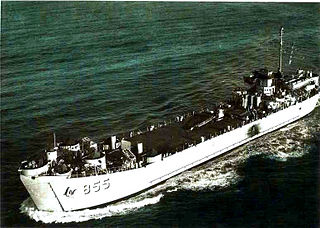
USS Kent County (LST-855) was an LST-542-class tank landing ship built for the United States Navy during World War II. Named after counties in Delaware, Maryland, Michigan, Rhode Island, and Texas, she was the only U.S. Naval vessel to bear the name.

USS Lafayette County (LST-859) was an LST-542-class tank landing ship built for the United States Navy during World War II. Named after counties in Arkansas, Florida, Mississippi, Missouri, and Wisconsin, and a parish in Louisiana, she was the only U.S. Naval vessel to bear the name.
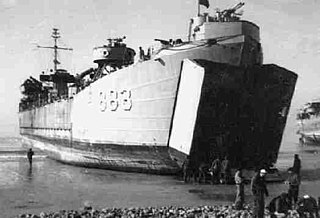
USS La Moure County (LST-883) was an LST-542-class tank landing ship built for the United States Navy during World War II. Named after LaMoure County, North Dakota, she was the first of two U.S. naval vessels to bear the name.
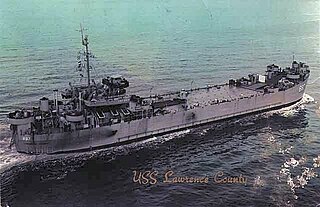
USS Lawrence County (LST-887) was a LST-542-class tank landing ship built for the United States Navy during World War II. Named after counties in eleven U.S. states, she was the only U.S. Naval vessel to bear the name.

USS Page County (LST-1076) was a LST-542-class tank landing ship built for the United States Navy during World War II. Named for counties in Iowa and Virginia, she was the only U.S. Naval vessel to bear the name. Initially known only as LST-1076, the ship was deactivated following the war. Renamed Page County in 1955, the ship was reactivated in 1960 and saw service during the Vietnam War. Decommissioned in 1971, Page County was transferred to the Hellenic Navy and renamed Kriti. Her fate is unknown.
USS Proton (AG-147/AKS-28) -- also known as USS LST-1078 – was an LST-542-class tank landing ship launched by the U.S. Navy during the final months of World War II. Proton served as a troop ship, a cargo ship and as an electronic parts supply ship for the U.S. Pacific Fleet and was decommissioned following the Korean War.

USS Grainger (AK-184) was an Alamosa-class cargo ship that served the US Navy during the final months of World War II. In 1947 she was placed back in service and served in the Korean War, earning two battle stars

USS Wexford County (LST-1168), previously USS LST-1168, was a United States Navy landing ship tank (LST) in commission from 1953 to 1971, which saw service in the Atlantic, Caribbean, and Pacific and served in the Vietnam War..





















